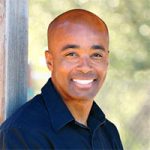
Barry Franklin
 Top 10 Forensic Anthropology Professors
Top 10 Forensic Anthropology ProfessorsForensic anthropologists use a combination of specialized skills from physical anthropology and human biology to help analyze and identify human remains for the use in court and or law. The remains of deceased individuals in crime scenes can range from skin tissue mutilation to unrecognizable remains in which the assistance of forensic anthropologists is pertinent to helping solve criminal cases. Throughout the nation, there have been many successful forensic anthropologists in the field who continue to inspire prospective students and professionals alike to help advance the industry further. In the list below, we have highlighted the top 10 forensic anthropology professors who have not only paved the path for new and exciting research within the field, but continue to advance the field in their own professional work.
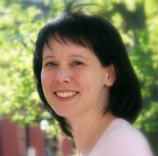
Dr. Tara Moore directs the graduate program in forensic anthropology at Boston University’s School of Medicine. She primarily teaches anatomical science and osteology (the study of bones), and has developed her own skills by completing training in human remains recovery through the FBI. Her most significant achievements at the school could be in creating two master’s degree programs, as indicated by a Faculty Spotlight article. These include an MS in Biomedical Forensic Science and an MS in Forensic Anthropology. She is an instructor with the school’s Citizen’s CTI Academy, an annual 11-week program that covers topics such as forensic DNA, forensic anthropology and case management and offered in conjunction with a local police department. As well, she’s co-authored multiple articles that have been published in academic journals.
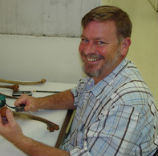
Students at Texas State University may truly benefit from Dr. Daniel Wescott’s experience since he helps direct undergraduate and graduate students in their research and in obtaining funding. He is the director of the school’s Forensic Anthropology Center, but he’s also busy conducting his own research, which includes among other things, coming up with methods to reconstruct trauma patterns for human skeletal remains and developing techniques for reconstructing biological profiles. In fact, Science magazine twice mentioned his research on skeletal biology and he received, in 2007, the Ellis Kerley Forensic Sciences Foundation Award for excellence in research forensic anthropology. He’s given 17 talks, authored or co-authored 34 papers and written three book reviews. He is a Fellow with the American Academy of Forensic Sciences and serves on the editorial board for the Journal of Forensic Sciences.
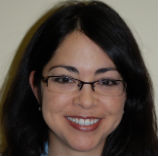
With interests in forensic anthropology, human skeletal remains and facial recognition technology, it’s no wonder that Dr. Arelene Midori Albert serves as a forensics anthropology professor and researcher. She works in the University of North Carolina Wilmington’s Department of Anthropology and specializes in, among other areas, the techniques used in human skeletal identification. In fact, since 2003, she’s been primarily focused on how age-related changes in craniofacial morphology affect computerized face-recognition programming. She also assists with research in the university’s Institute for Interdisciplinary Studies in Identity Sciences, working with its Face Aging Group to looks at biometrics (the mathematical or statistical analysis of biological data) and face identification.
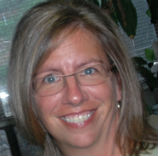
Dr. Lee Meadows Jantz coordinates the body donation program run the through the University of Tennessee, Knoxville’s Forensic Anthropology Center, a program that sees the donation of more than 100 bodies every year. She also teaches the Human Identification Courses offered through the FAC and is curator for the William M. Bass Donated and Forensic skeletal collections. Locally, she’s been mentioned in Knox News articles written about the FAC, including that it houses more than 55 unidentified skeletal remains, many of them primarily from Eastern Tennessee. Her research interests pertain to the skeletal biology of past and present human populations as well as to human growth and development. She assists in human identification cases as requested at the local, state or federal levels and has co-authored articles that have run in the likes of The American Journal of Physical Anthropology or the American Journal of Human Biology.
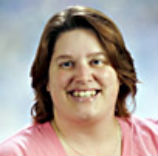
Dr. Elizabeth Miller, an associate professor for the California State University Los Angeles’ College of Natural and Social Sciences, is particularly interested in forensic anthropology and paleopathology (the study of ancient diseases). Her hands-on experience includes consulting as a forensic anthropologist for the Los Angeles County Department of Medical Examiner. In fact, she works on more than 50 forensic cases every year and involves her students in the process of field work recovery. AT CSULA, she teaches courses including forensic anthropology, human osteology, and human evolution, among others and provides field recovery coursework in skeletal remains through the Los Angeles County Coroner’s Department. She is also a member of the forensic-based International Association for Identification and of the American Academy of Physical Anthropologists
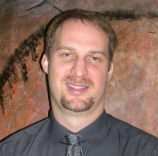
As an associate professor of the anthropology department at California State University, Chico, Dr. Erik Bartelink primarily teaches coursework in physical anthropology but has also assisted in teaching recovery courses at Chico State as well as with the California Department of Justice and Search and Rescue. His forensic anthropology interests primarily relate to taphonomy (the area of paleontology studying how organisms become fossilized), and trauma analysis. He has aided in mass grave excavations in Bosnia-Herzegovina on a United Nations forensic team and also helped with identification of remains in the World Trade Center tragedy. He’s been published in the International Journal of Osteoarcheology and in the Journal of Forensic Sciences and, in 2011-2012, was awarded Outstanding Research Mentor at Chico State.
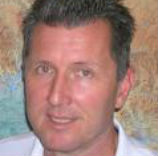
An adjunct assistant professor for the school of anthropology at the University of Arizona, Dr. Bruce Anderson has research interests that include human identification in medico-legal cases and human skeletal variability. He serves as a mentor for the school’s forensic anthropology internship program and works as a forensic anthropologist for the Pima County Office of the Medical Examiner. A News 4 Tucson article indicates that the work he does at the medical examiner’s office includes helping to identify the remains of those who died trying to cross over into the U.S. from Mexico. He’s also a Diplomate with the American Board of Forensic Anthropologists, has spoken at conferences (including to anthropology students at Chico State), and has taught technology in forensic anthropology workshops through the National Institute of Justice.
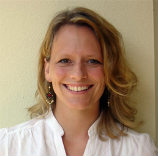
Dr. Erin Kimmerle is an associate professor in the Department of Anthropology at the University of South Florida. In addition to doing research, she teaches subjects such as forensic anthropology, biological anthropology, human osteology, and bioarchaeology. She also leads an advanced laboratory methods class in forensic anthropology. Her research is geared toward how aging, development and growth can affect aspects of human and skeletal identification, including facial recognition and skeletal analysis. She is also interested in the way that skeletal biology and other identifying factors of various population groups ties in to human rights or justice initiatives. Past experiences include working as chief anthropologist for the United Nation’s International Criminal Tribunal for the Former Yugoslavia, and as an osteologist for the National Museum of Natural History in Washington D.C.
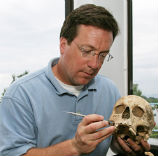
With a passion specifically for forensic anthropology and bioarchaeology, Dr. Todd Fenton brings his expertise to the Department of Anthropology at the University of Michigan. His research interests include analysis of skeletal trauma and techniques for human identification. Earlier this year, using DNA analysis, Dr. Fenton and others were able to confirm the presence of a respiratory disease, called brucellosis, in skeletons that were approximately 1,000 years old and found in a burial site in Albania. As well, he is working on a research project called “A Forensic Pathology Tool to Predict Pediatric Skull Fracture Patterns,” which is funded through the National Institute of Justice. He is also a Fellow with the American Academy of Forensic Sciences and has co-authored articles that have published in the likes of the Journal of Forensic Sciences and American Antiquity.
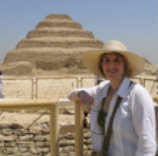
As a forensic anthropologist and biology professor at Mount Saint Joseph in Cincinnati, Dr. Elizabeth Murray has taught students coursework in human gross anatomy, muscoskeletal anatomy, and a survey of forensic sciences. She also had has practical experience in the field, working as a forensic anthropologist for several coroners offices in Ohio. Her expertise has extended to consultant work for groups such as the Cincinnati Museum of Natural History and Science, National Missing and Unidentified Persons System, the Parents of Murdered Children, and others. Additionally, she’s been an expert on shows like National Geographic Channel’s “Skeleton Crew/Buried Secrets” and Discovery’s “Skeleton Stories.” In 2012, she released the book called “Forensic Identification: Putting a Name and Face on Death” and is one of less than 100 Diplomates who are certified by the American Board of Forensic Anthropologists.
The following criteria were used in compiling this list of Top 10 Forensic Anthropology Professors. Not all criteria below applied to each and every professor, but many of the listed professors may have:
Some of these professors became involved in research or projects that sent them to unique parts of the globe to understand or explore more about forensic anthropology.
Similar to the above, some of these professors have worked in recovering and helping identify remains in settings that were deeply tragic or important to families and communities.
Many of these forensic professors are members of professional organizations related to forensic anthropology or the forensic sciences.
Several of these professors have worked as forensic anthropologists for coroners offices’ while others have gained skills in the field in other ways.
Nearly all of these forensic anthropologists have been published in one way or another, be that through co-authoring or authoring an article for academic release, or even by writing books.

Barry Franklin
Before co-founding Sechel Ventures Partners LLC, Barry Franklin was a VP at a Silicon Valley software company. He is an investor and advisor for DataSimply and Impellia. Barry believes that education and lifelong learning are paramount. Barry met his wife at Carnegie Mellon University and they have two beautiful daughters. He also volunteers for various committees at his kids’ high school.